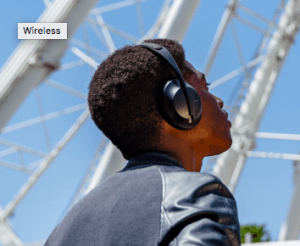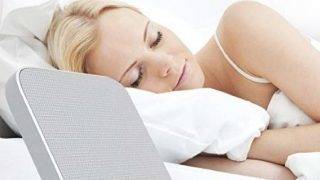Bose is one of the pioneers of the audio industry. Throughout the years, Bose has created some of the world’s most popular audio system and has invested time and resources into changing the way that people hear and experience sound.
A Bit of Bose History
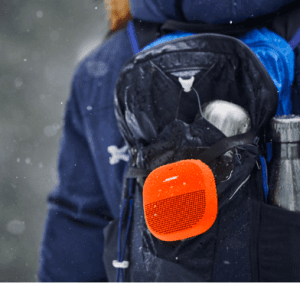
Throughout the years, as they gained more experience, Bose started centering its values around the idea that technology needs to be able to improve people’s lives on many different levels. In order to achieve its mission, Bose was heavily invested in making sure they develop a company with plenty of engineers, design specialists, marketers, developers, and so on. By bringing together people who are passionate and good at what they do, Bose knew it could create quality products for its market.
Some of Bose’s most significant milestones include:
- 1964: The year when Amar Bose created the company bearing his name. However, the company’s first product wasn’t launched until 1966. It was their very first loudspeaker, but due to Bose’s lack of experience, it didn’t have very much success.
- 1968: This is the year that marks one of Bose’s first successful product: another speaker. Why was this special, you ask? Because the speaker was designed to mimic the emotional audio experience that people felt when attending a live concert. The company focused a lot more on product demonstration, so the 901 speaker was a success.
- 1978: Fast forwards through a decade of speaker innovation, a global launch, and plenty of product development, 1978 marks the year when Bose, while traveling by air, discovered how much the world could use noise-cancellation technology. Disrupted by the background noise, Bose developed the mathematics for noise-cancellation headphones immediately after landing. However, it was only in 1986 that the first noise-canceling headphones developed by Bose were actually tested on a flight, by pilots Jeana Yeager and Dick Rutan.
- 1987: Bose and William R. Short receive the Intellectual Property Owners Education Foundation’s Inventor of the Year Award for their development of the waveguide loudspeaker system.
- 1988: During the winter Olympics in Canada, Bose became the very first company to provide sound systems for such an event.
- 1998: Bose opens its first international store in New Dehli.
- 2004: Further expanding its knowledge, Bose turns its linear-motion actuator technology into a business capable of supplying materials and simulation instruments to engineering companies, universities, research institutions, and so on.
- 2008: Bose’s founder was introduced into the Akron Hall of Fame for his outstanding achievement in the field of audio technology.
- 2013: Amar Bose dies at the age of 83, but the company continues his legacy after appointing Bob Maresca as the CEO of the company.
You may be interested in: Bose Ear Plugs
The Concept behind Bose’s Sleebuds
When you hear words like “earbuds” or “sleepbuds”, you’re probably picturing a set of in-ear headphones that connect to a mobile device, like a smartphone or a music player, and can render the audio tunes that you play on said device. That’s why you might be tempted to think that these sleepbuds do the very same thing.
Actually, the Bose sleep headphones are basically a smaller wireless sound machine, which a much higher sound output quality. In other words, these are not headphones that stream music, they are earbuds that block external noise and background noise that could potentially prevent you from sleeping.
But even if they are designed to be used as sleep headphones, they can also serve people who are looking to “tune out” and perhaps study, meditate, or simply for those who don’t feel like listening to the racket and other people’s conversations while they’re on the bus.
The entire concept of the Bose sleep headphones is pretty simple: you pick a sound out of the preset ones available, you set an alarm to wake you up in the morning, and you just sleep. The headphones are controlled from the mobile app, which is quite simple to navigate through.
The preloaded sounds are, as follows:
- Tranquility: Created to be like a soothing spa melody.
- Warm static: This is very similar to the white noise you get from the machines that bear the same name.
- Swell: For those who enjoy listening to the sound of waves.
- Downstream: For people who like to imagine they’re walking through the forest, with a stream running beside them.
- Shower: Soothing rainfall sounds.
- Cascade: Because the sound of water falling is awesome.
- Rustle: Gentle sound of wind interacting with leaves.
- Circulate: For sleepers who enjoy fan sounds.
- Altitude: Great for those who like the airplane cabin ambient noise.
- Campfire: Self-explanatory, but with crickets in the background!
Initial Setup
It’s easy for people to get confused when they first try to set up a kind of product that they’ve never used before. However, Bose has created an entire flow around the process that first-time users have to go through, streamlining the experience so that even the less tech-savvy can have functional headphones in minutes.
Bose has a special app that you can download on your smartphone and the wizard will guide you through the setup every step of the way. You will then pair your sleeping headphones with your phone, which can be either an Android or an iOS device.
Charging
The Bose Sleepbuds are charged by placing them inside their case. However, there is a precise position that you have to nail every time if you want these earbuds to actually charge. The magnets integrated into the system can make sure that the headphones are actually charging, but they don’t serve really well in guiding you to placing these in the right position.
As advertised, the Bose sleep headphones are meant to provide you with 16 hours of battery autonomy, and this marketing promise is almost true. Of course, the battery’s life will depend on how you use your device. If you choose to listen to the sound for 30 minutes, the battery will certainly last longer than those who opt for continuous sound playback.
Unboxing & Design
Design and comfort are two aspects that go hand-in-hand, but we wanted to talk about them separately because there’s plenty to be said about both. The concept behind these headphones is to plug the ear, allowing little to no noise to reach your ear canal.
That’s one of the things that make this product so brilliant: it has a sleek design that easily fits inside the ear and stays there. And while we’re talking design, we can’t help but praise how good the case looks. The Bose sleep headphones come with an aluminum case… with a twist.
Aside from keeping the headphones protected when not in use, and serving as an excellent carrying case that won’t allow you to lose your headphones in your backpack, this case also acts as an external battery charger, but for headphones. The case provides you with about 16 hours of charge even when you’re nowhere near a USB port. The only weird thing is that Bose opted for a micro USB port, instead of the newer and faster-charging type C.
Getting past that, you slide the case open to reveal the headphones, which look like something out of a sci-fi movie. It becomes clear why Bose is a world-leader in its field. The earbuds feature a Sleep tip, which is actually another means to block out noise. It’s absolutely vital to mention that the sleep tip is available in three different sizes, which is important to know because this means that the Bose headphones are designed for every ear size, which is awesome, to say the least.
Measuring about 1 x 1 cm and weighing in at 1.4 grams, these headphones are small and lightweight. It is about at this point that people start thinking why on Earth they cost so much.
Comfort
Probably the most important aspect for many of you when considering buying headphones that are designed for sleeping is how comfortable they feel when you’re actually in bed. Throughout the years, manufacturers that have looked to create comfortable sleeping headphones have struggled with finding a concept that works for as many people as possible. But let’s talk Bose.
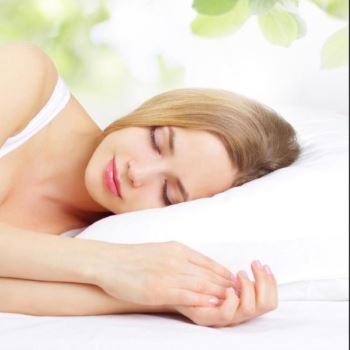
Now, the thing with these headphones is that it’s often a love-hate relationship. What that means is that people who have used the headphones either fell in love with how they felt or never got used to them. There’s really no telling what type of relationship you’ll have, but here are some considerations that might give you a clue whether or not you two are a match:
- Even customers that now love their Bose sleep headphones needed a break-in time to get adjusted to how these felt. That means that you shouldn’t give up on them even if they seem very uncomfortable the first few nights.
- If you’re a side sleeper, the plastic of the earbuds might make a disturbing noise if you tend to toss and turn a lot while you’re sleeping. However, that isn’t really a problem unless you’re a very light sleeper.
How They Work
Because the Bose sleep headphones are not designed to replace your average headphones, but rather to enhance the benefits and quality that you’d want to get from a sound machine, they are designed to be compatible with the Bose app only, so trying to sync them with some of your streaming platforms is useless.
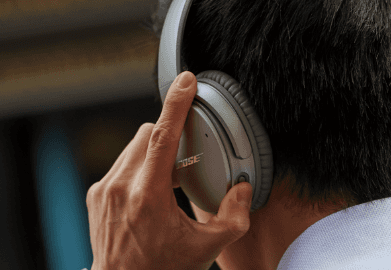
The Bose headphones provide a total of 10 different sounds, which are divided into two main categories: sleep and relaxation. As mentioned before, when you select one of these sounds, you are also able to adjust its playback time. This means that you can listen to the sounds of crashing waves for 30 minutes, or throughout the entire night. Of course, the app also allows you to adjust the volume of each sound.
The alarm feature makes perfect sense, because if you were to set up your alarm as you usually do, the noise-cancellation headphones might prevent you from actually hearing it. When it’s time to wake you up, the headphones will certainly do so.
You may be interested in: Sleep Headphones Amazon Has to Offer
Conclusion
When you hear that a huge brand like Bose has released a new product, you know that it’s going to be good. And, much like the other products it has created in the past, these sleep headphones were meant to revolutionize the way we sleep and how we integrated noise-cancellation into our nocturnal lives.
The Bose sleep headphones aren’t cheap, but when you get the chance to test them, you immediately begin to understand why. The headphones are clearly a premium product that’s designed for people who would benefit from a white/sound machine in order to block external noise that could distract their brains from falling asleep.
Despite their spicy price, the Bose headphones deliver exactly what they’re meant to; they’re comfortable enough to be used throughout the entire night, they’re small enough to be transported even when traveling (regardless of the means of transportation), and provide mean sound quality that’s definetly what you would expect at this price point.
